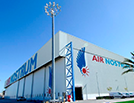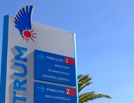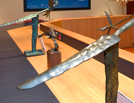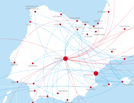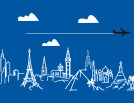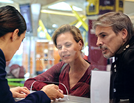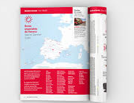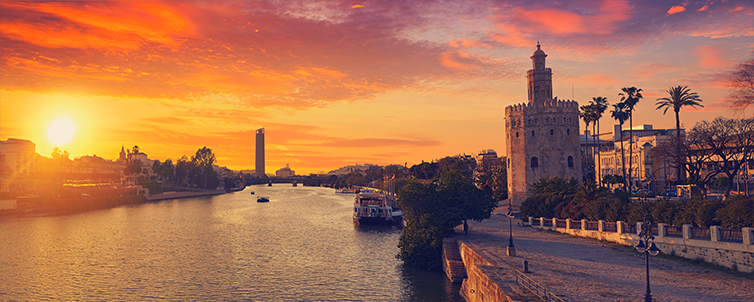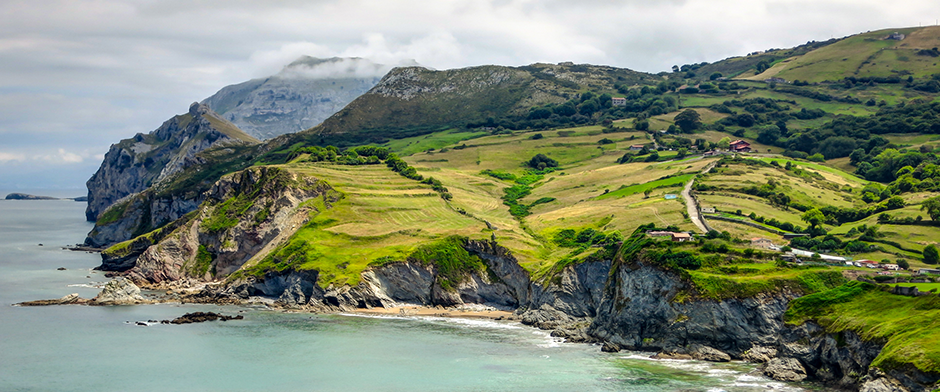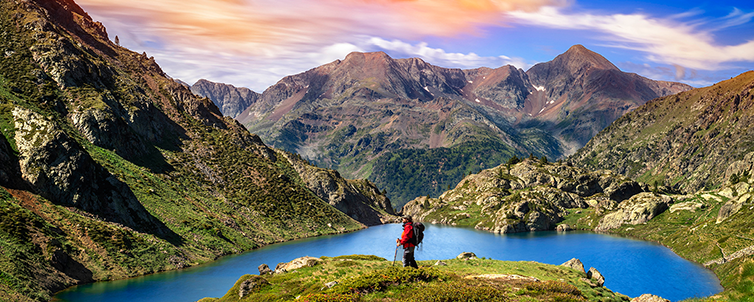TOULOUSE
The Pink City
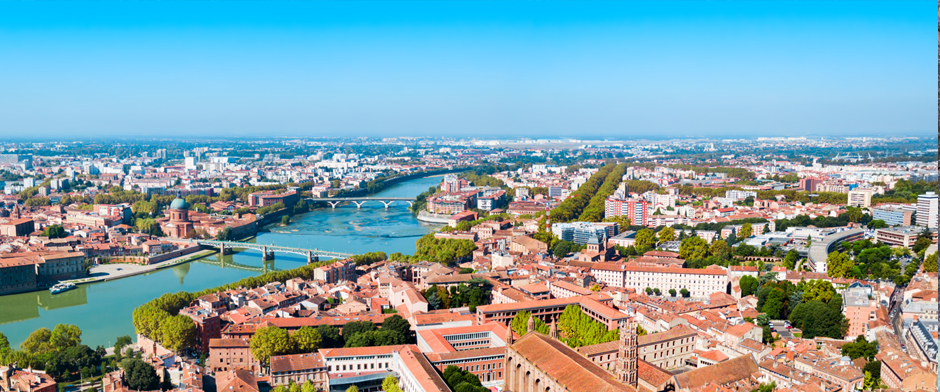
When the sun sets on the rooftops of Toulouse, it is clear to see why this city has been given the nickname ‘la Ville Rose’ (the Pink City). It is at this precise moment when pinkish colours of the buildings’ bricks blend with the evening sky, creating a warm, romantic atmosphere that invites you to contemplate this magnificent twilight. And in addition there are violets everywhere.
SARA PENALBA
Industry, innovation, artistic and architectonical heritage make Toulouse a unique travel destination; a place that visitors can fall in love with due to its mix of tradition and modernity. A stroll down Toulouse’s historic centre will show us the beauty of its Renaissance buildings. The Assézat Palace (which currently houses the Bemberg Foundation, an important private art collection), the Bernuy Palace (flanked with an octagonal tower), the Vieux Raisin Palace, the Clary Palace or the Pierre Palace are just some of the treasures hidden in the city with the largest number of Renaissance palaces in France.
These manors were built back in the 16th century by Toulouse’s rich merchants and are proof of the lavish years in which la Ville Rose used to trade with woad (Isatis Tinctoria), a plant cultivated in the surrounding areas of Lauragais’ used as a blue dye and also for its cosmetic properties.
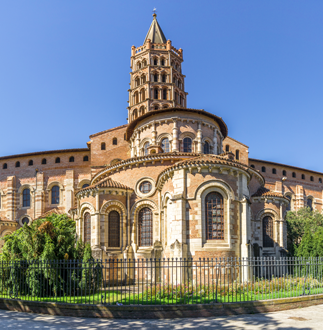
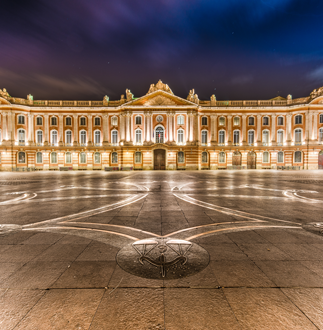
The Basilica de Saint-Sernin (a masterpiece of Romanesque architecture) and the brickbuilt Church of Jacobins (a Southern Gothic architecture jewel with a unique cloister) can also be found in the city’s old quarter.
Located in the heart of the city is the Capitole Square. Here, restaurants, terraces and beautiful pinkish buildings surround the impressive construction known as the Capitole: a 16th century building which serves as city hall, a theatre and opera house. Once inside this 8-column building, we encourage you to visit the Salle del Illustres, which was inspired by Rome’s Farnese Gallery. Another curious element of this building is the 16th century Archive Tower located in the backside of the building, currently housing Toulouse’s Tourist Office.
The city centre is filled with life, restaurants and small businesses scattered throughout its streets (making Toulouse very similar to southern Mediterranean cities). This makes it the perfect place to do some shopping or have a bite to eat in one of its various cafés.
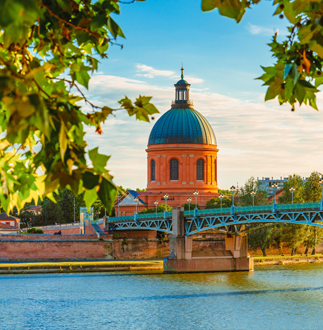
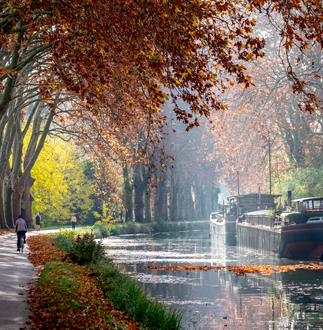
Closer to the Garonne River there’s la Daurade, a beautiful quarter and the ideal place for going for a walk. Its recently refurbished fluvial port, La Prairie des Filtres Park and the Henri Martin Promenade (which goes along the river) are some of the city’s most visited locations during the warm summer and spring months. Enjoy some time outdoors and have a picnic whilst the sun caresses your skin.
If the idea of enjoying nature and the sound of water in a relaxing environment convinces you, we recommend paying a visit to the Canal du Midi (literally, the Noon Canal). This UNESCO World Heritage Site connects the Garonne River with the Mediterranean Sea. Follow the river on foot or on a bike.
Another more exotic option is Toulouse’s Japanese Garden. Located right next to the Compans Cafarelli underground station, this unique Zen garden makes you feel like you are in Japan.
At night, when the front of the city’s buildings, manors and monuments are embellished with artistic lighting, locals, students and visitors from all over the world go out to enjoy Toulouse’s leisure offerings. From bars, restaurants and theatres to halls, pubs and discos, this young, dynamic, fun city has it all. Come and taste a beautiful French wine whilst dancing in one of the city centre’s many night clubs!
As tempting as the idea of getting lost in Toulouse’s streets, squares and parks might be, there are many more hidden secrets worth discovering in the city, such as the Aeroplane and Aerospace Museums. Because Toulouse is a city with an eye on the future, with its citizens embarking on exciting space missions in the City of Space, a place offering multiple interactive exhibitions and shows. Not only that, there’s also Airbus’ headquarters, where visitors can discover the new Airbus A380 thanks to the guided tours organised by the company (don’t forget to book in advance!), and the Aeroscopia Aeronautic Museum, where visitors learn about the past, present and future of the aviation industry.
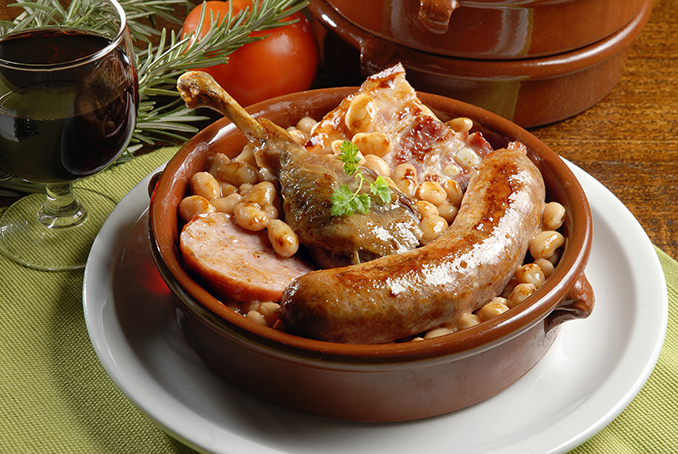
TOULOUSE´S CASSOULET
The cassoulet is Toulouse’s most famous dish. It consists of four basic ingredients plus others depending on the chef. It is made of pork (lean, hock and sausage), duck confit, bacon, Toulouse sausage, and lamb. Sometimes it even includes goose confit and fat. The use of white bean varieties also depends on the region. The thin-skin, long Tarbes beans, for instance, are easily infused with the dish’s flavour.
But the secret to the cassoulet is its cooking temperature: it has to be cooked on a low heat. Many cities claim to be the place of origin of the cassoulet. Was it first cooked in Castelnaudary? In Carcasona? In Toulouse? Some historians even say that the Romans ate this stew in Narbona, whilst others date its origin back to the Middle Ages. All this seems unlikely though, as beans didn’t arrive into Europe until the 16th century, when they were brought over all the way from America.
The recipe varies depending on the city. Toulousian cassoulet’s pride lies in the use of sausage. Castelnaudary’s cassoulet, on the other hand, carries goose confit. In Carcasona, this dish has lamb and partridge.
THE CASSOULET: The word cassoulet comes the word cassole, the clay vessel in which this stew is cooked. They are usually made by potters from the village of Issel, located just 8 km north from Castelnaudary. This vessel’s thermal characteristics are perfect for the cassoulet, distributing the heat during the cooking process.

